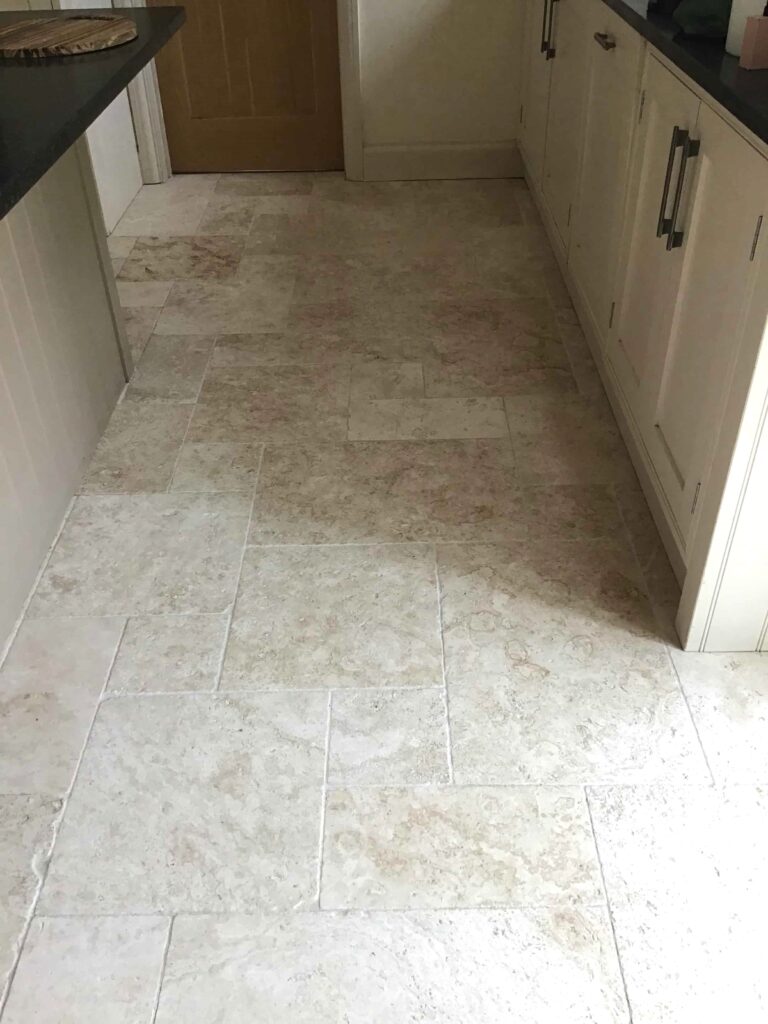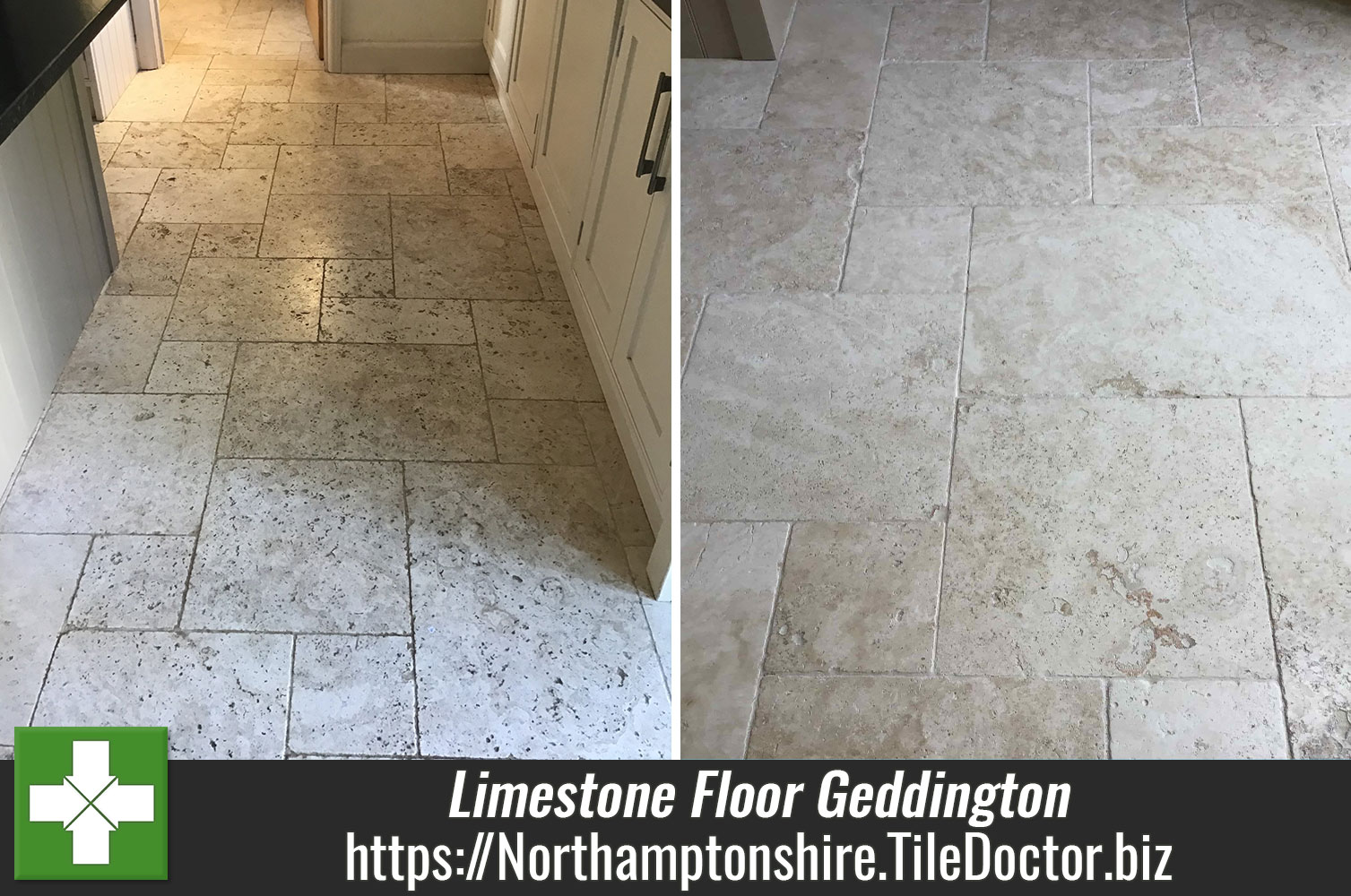Polishing a Limestone Tiled Kitchen Floor with Tile Doctor Burnishing Pads in Geddington Northants
This client from Geddington called me in to renovate their Limestone tiled floor which had been installed throughout much of the ground floor. Limestone like any natural stone is porous and will suffer from ingrained dirt if the sealer isn’t maintained, so it’s not unusual to need work like this doing every three to five years.

I visited the property to survey the tiles and could see the stone had quite a lot of surface pitting which was trapping dirt and making it very difficult to keep clean. Pitting is quite common in this type of stone, and they are usually filled at the factory, however the filler can become dislodged with wear and the problem can be made worse by the use of acidic cleaning products.
 |  |
After surveying the floor, I came up with a comprehensive renovation plan that included deep cleaning the stone, filling the pits, polishing, and then sealing. I also made a note to discuss aftercare cleaning at the end so the floor wouldn’t get so bad in future.
Happy with my plan and quote a date was agreed for the work to commence.
Cleaning a Pitted Limestone Tiled Kitchen Floor
It was a large floor so to minimise disruption to the owner I split the job up into several areas and worked through the following process.
Work started with a general clean of the floor using Tile Doctor Pro-Clean with a focus on cleaning the grout. I used a strong dilution of Pro-Clean, left it to soak into the stone and grout for around ten minutes and then scrubbed it into the floor using a black pad fitted to a rotary machine. I also ran a stiff grout brush along the grout lines to get them as clean as possible. Once done the floor was rinsed and the soiling extracted with a wet vacuum.
The next step was to hone the Limestone using a set of diamond encrusted burnishing pads. These pads are great for bringing up the polish on a stone floor like this and you start with a coarse 400-grit pad fitted to a rotary floor buffer. Water is used to lubricate the process and the pads are run over each tile three or four times. The floor is then rinsed and extracted as before, and the process repeated with the 800 and then 1500 grit pads.
Once done the floor was looking much cleaner and brighter and ready for the next step which was to fill the pits. To do this I inspected the floor, identifying all the areas that needed attention and then filled those holes with a resin filler that is colour matched to the stone.
Sealing a Pitted Limestone Tiled Kitchen Floor
The last step was to seal the limestone and for this I used Tile Doctor Ultra-Seal which is an impregnating sealer that soaks into the stone, occupying the pores of the stone and thereby preventing dirt from residing there. Sealing keeps the dirt on the surface where it can easily be cleaned away. Ultra-Seal doesn’t contain any colour enhancers, so it leaves the stone with a very natural appearance which is what my client wanted.
 |  |
The floor was transformed by the work and my client was very happy with the result, they even went to the trouble to leave the following review:“We are absolutely delighted with the work undertaken by Philip, the Northamptonshire Tile Doctor. He has completely transformed very dirty limestone floors into something of great beauty – better than new. Philip was a pleasure to deal with throughout and we can highly recommend him.”

With regards to aftercare cleaning, I recommended they use Tile Doctor Stone Soap which is designed for cleaning polished stone floors and helps maintain the patina.
Source: Limestone Cleaning and Polishing Service in Geddington Geddington
